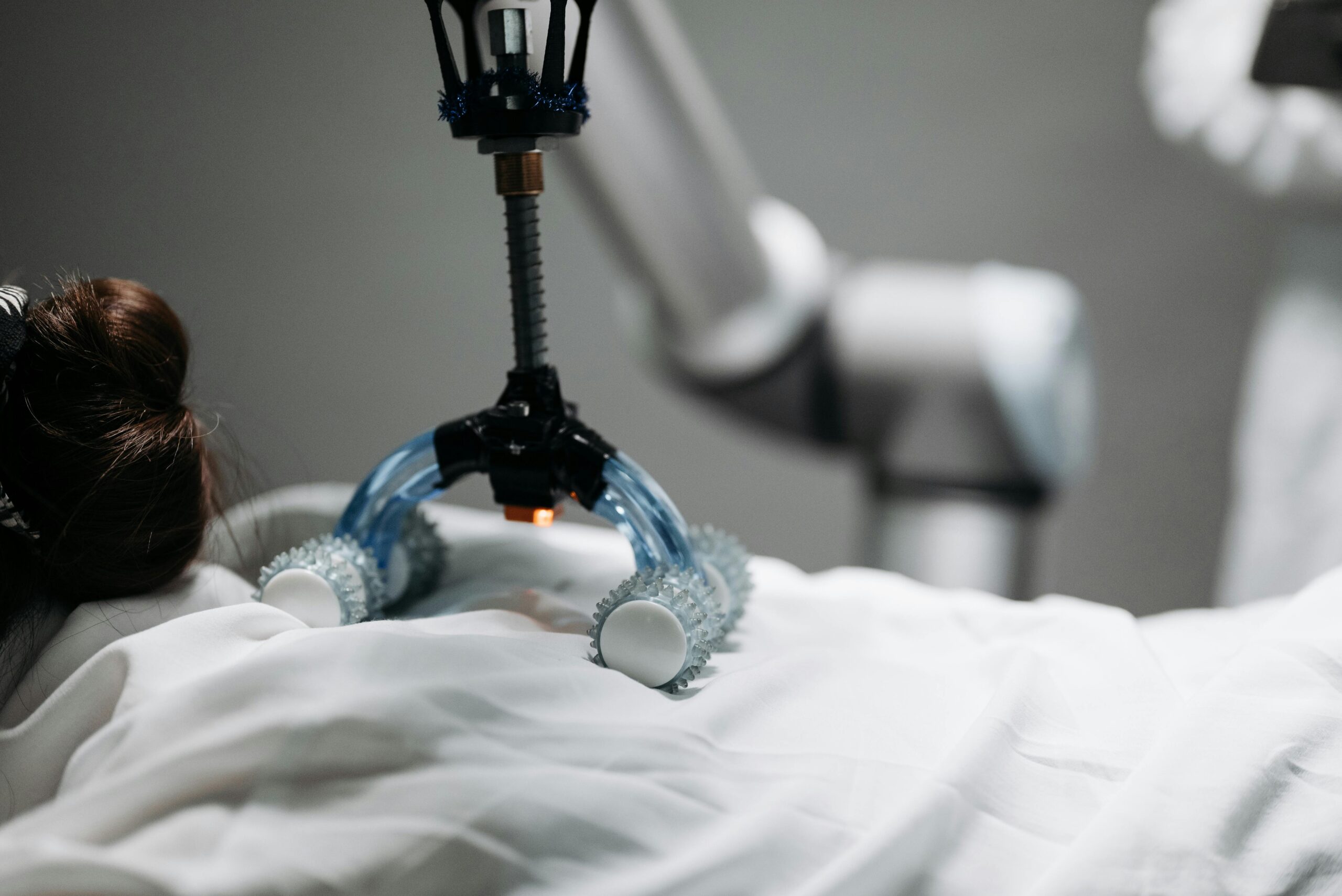Introduction
The future of robotics in surgery promises to transform healthcare, offering unprecedented precision, efficiency, and outcomes. From robotic-assisted surgeries to the integration of mixed reality, the advancements in this field are set to redefine surgical procedures and patient care. This blog explores the current innovations and potential benefits of these technologies.
Advancements in Robotic-Assisted Surgeries
- Enhanced Precision and Control
Robotic-assisted surgeries have revolutionized surgical precision. These systems, such as the da Vinci Surgical System, allow surgeons to perform complex procedures with enhanced control and accuracy. The robotic arms can filter out hand tremors and execute delicate movements beyond human capability, reducing the risk of complications and improving surgical outcomes. - Minimally Invasive Procedures
Robotic systems facilitate minimally invasive surgeries, involving smaller incisions compared to traditional open surgeries. These smaller incisions lead to numerous benefits, including reduced pain, lower risk of infection, shorter hospital stays, and faster recovery times. Patients can return to their daily activities more quickly, enhancing their quality of life. - Improved Visualization
Advanced imaging technologies integrated into robotic systems provide surgeons with high-definition, 3D views of the surgical site. This enhanced visualization allows for better assessment and manipulation of tissues, improving the surgeon's ability to perform precise and effective procedures. The improved clarity and depth perception contribute significantly to the success of surgeries.
Mixed Reality in Surgical Assistance
- Augmented Reality (AR) and Virtual Reality (VR)
Mixed reality, combining augmented reality (AR) and virtual reality (VR), is set to further revolutionize surgical practices. AR and VR technologies, though often discussed together, serve distinct purposes and offer unique advantages in the surgical field. - Augmented Reality (AR)
Augmented Reality overlays digital information onto the real world, enhancing the surgeon’s view without completely replacing it. During surgery, AR can project 3D models of organs, blood vessels, and other critical structures onto the patient’s body. This overlay helps surgeons navigate complex anatomy with precision, making it easier to identify and avoid vital structures. - Applications of AR in Surgery:
– Real-Time Guidance: AR can provide step-by-step guidance during surgeries, displaying important data such as anatomical landmarks, incision lines, and safe zones.
– Preoperative Planning: Surgeons can use AR to plan surgeries by visualizing the procedure on a patient’s actual anatomy. This allows for better preparation and anticipation of potential challenges.
– Education and Training: AR can be used to create interactive educational tools for medical students and trainees, offering a hands-on learning experience without the risks associated with actual surgery.
Virtual Reality (VR)
Virtual Reality immerses users in a completely digital environment. In surgical applications, VR is primarily used for training and simulation. Surgeons can practice complex procedures in a controlled, virtual environment, which mimics the operating room experience without any risk to patients.
Applications of VR in Surgery:
- Surgical Training: VR allows surgeons to practice and refine their skills on virtual patients. This realistic practice can improve proficiency and confidence before performing actual surgeries.
- Preoperative Rehearsal: Surgeons can rehearse specific procedures using VR simulations based on the patient’s medical imaging data, enabling a more thorough and customized preparation.
- Collaboration: VR facilitates remote collaboration by allowing surgeons and medical professionals from different locations to interact within the same virtual environment. This can be particularly useful for mentoring and consultations.
Real-Time Data and Navigation
Mixed reality systems can display real-time patient data, such as vital signs and imaging results, directly in the surgeon's field of view. This immediate access to critical information enhances decision-making and allows for more precise and informed surgical interventions. Additionally, mixed reality can assist in navigation, providing visual cues to guide surgeons through intricate anatomical structures.
Remote Collaboration and Training
Mixed reality enables remote collaboration, allowing surgeons to consult with experts from around the world in real-time. This capability is particularly valuable in complex or rare cases where specialized expertise may not be locally available. Surgeons can also participate in remote training sessions, observing and interacting with virtual surgeries to hone their skills and learn new techniques.
Benefits and Future Prospects
- Improved Patient Outcomes
The integration of robotic-assisted surgeries and mixed reality technologies is expected to lead to improved patient outcomes. Enhanced precision, reduced invasiveness, and better visualization all contribute to more successful surgeries with fewer complications. Patients can expect faster recoveries and better overall health results. - Increased Surgical Efficiency
These technological advancements also increase surgical efficiency. Shorter operating times and reduced hospital stays translate into cost savings for healthcare systems. Moreover, the ability to perform complex procedures with greater ease can expand the range of treatable conditions, offering new hope to patients with previously inoperable conditions. - Continued Innovation
The field of robotic surgery is continuously evolving. Ongoing research and development are expected to bring even more sophisticated robotic systems and mixed reality applications. Future innovations may include fully autonomous surgical robots, advanced AI-driven decision support, and further integration of real-time data analytics to enhance surgical precision and outcomes . - Conclusion
The future of robotics in surgery is bright, promising significant advancements that will revolutionize healthcare. Robotic-assisted surgeries and mixed reality technologies are at the forefront of this transformation, offering enhanced precision, improved patient outcomes, and increased efficiency. As these technologies continue to evolve, the possibilities for improving surgical care and patient well-being are boundless. Embracing these innovations will undoubtedly lead to a new era in surgical practice, where the boundaries of what is possible are continually expanded.
References
1. Intuitive Surgical. (2021). da Vinci Surgical System. Retrieved from Intuitive Surgical
2. Herron, D. M. (2016). The Cutting Edge: Robotic Surgery. American Journal of Surgery, 211(2), 301-307. doi:10.1016/j.amjsurg.2015.11.006
3. Advincula, A. P., & Wang, K. (2009). The Evolution of Robotic Surgery: Surgical and Economic Impact in the United States. Best Practice & Research Clinical Obstetrics & Gynaecology, 23(6), 727-740. doi:10.1016/j.bpobgyn.2009.08.001
4. Eltorai, A. E. M., Nguyen, E., Daniels, A. H. (2015). Three-Dimensional Printing in Orthopedic Surgery. Orthopedics, 38(11), 684-687. doi:10.3928/01477447-20151103-12
5. Marescaux, J., Rubino, F., Arenas, M., et al. (2004). Augmented-Reality–Assisted Laparoscopic Adrenalectomy. Journal of the American College of Surgeons, 199(6), 799-
803. doi:10.1016/j.jamcollsurg.2004.08.005
6. Mischkowski, R. A., Zinser, M. J., Kübler, A. C., et al. (2006). Application of an Augmented Reality Tool for Maxillary Positioning in Orthognathic Surgery – A Feasibility Study. Journal of Cranio-Maxillofacial Surgery, 34(8), 478-483. doi:10.1016/j.jcms.2006.07.856
7. Bharathi, A. (2019). Virtual Reality in Surgery: Its Advantages and Disadvantages. Journal of Surgery and Anesthesia, 3(1), 104.
8. Seymour, N. E., Gallagher, A. G., Roman, S. A., et al. (2002). Virtual Reality Training Improves Operating Room Performance: Results of a Randomized, Double-Blinded Study. Annals of Surgery, 236(4), 458-464. doi:10.1097/01.SLA.0000028969.51489.B4
9. Kenngott, H. G., Wagner, M., Gondan, M., et al. (2014). Effect of Virtual Reality Training on Laparoscopic Surgery Skills: A Randomized Controlled Trial. Journal of Surgical Education, 71(3), 439-443. doi:10.1016/j.jsurg.2013.12.007
10. Choi, P. J., Oskouian, R. J., Tubbs, R. S. (2017). Telesurgery: Past, Present, and Future. Cureus, 9(10), e1838. doi:10.7759/cureus.1838
11. Gagliardi, A. R., Marshall, C., Huckson, S., et al. (2014). Developing a Checklist for Surgical Innovation: A Consensus Process. Surgery, 155(4), 605-612. doi:10.1016/j.surg.2013.12.007
12. Barbash, G. I., & Glied, S. A. (2010). New Technology and Health Care Costs — The Case of Robot-Assisted Surgery. New England Journal of Medicine, 363, 701-704. doi:10.1056/NEJMp1006602
13. Moorthy, K., Munz, Y., Sarker, S. K., & Darzi, A. (2003). Objective Assessment of Technical Skills in Surgery. BMJ, 327, 1032-



